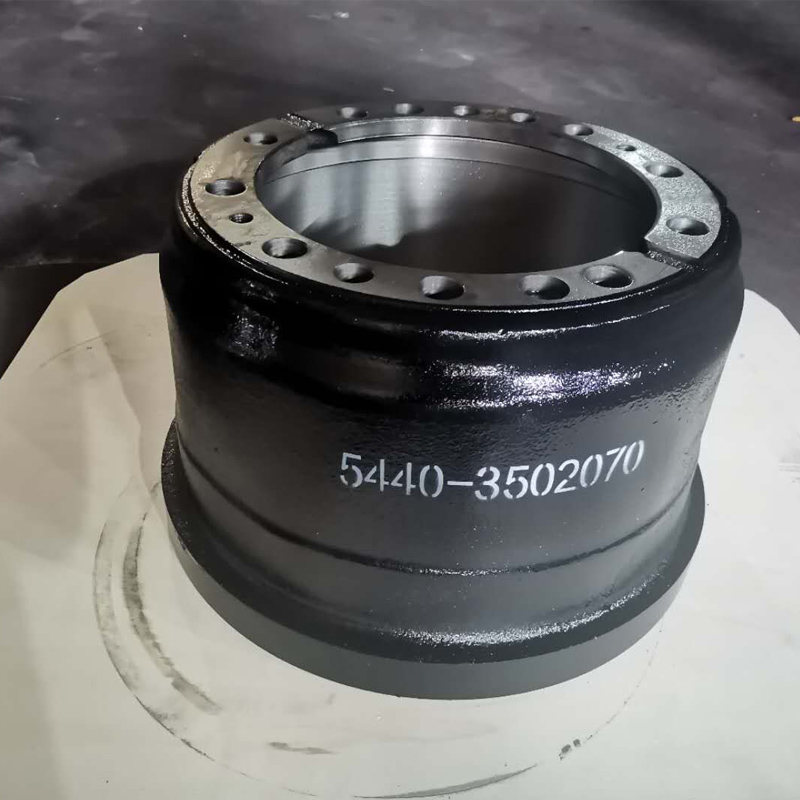Dec . 07, 2024 07:46 Back to list
seized brake drum
The Importance of Proper Maintenance A Closer Look at Seized Brake Drums
Brake systems are crucial components of any vehicle, ensuring safety and control during operation. One critical issue that can arise in drum brake systems is the phenomenon of seized brake drums. Understanding what causes seized brake drums, the signs of their occurrence, and how to prevent them is essential for every vehicle owner.
What is a Brake Drum?
A brake drum is a cylindrical component of a drum brake system. When the brake pedal is pressed, brake shoes expand against the interior surface of the drum, creating friction that slows or stops the vehicle. This design is commonly found in older vehicles and some modern ones, particularly in rear-wheel drive configurations. However, brake drums are subjected to significant wear and tear, which can lead to various issues, including the dreaded seizure.
Causes of Seized Brake Drums
1. Corrosion Over time, moisture can combine with road salt and dirt to cause corrosion. When brake drums rust, the brake shoes can stick to the inner surface, leading to a seizure. This is particularly common in regions with harsh winter conditions.
2. Heat Excessive heat during braking can warp or damage the brake drum. If the drum is warped, it may not disengage properly, leading to a stuck position.
3. Lack of Maintenance Regular maintenance is crucial for the longevity of any vehicle component. Failing to inspect and replace worn brake components can lead to an accumulation of debris and rust, increasing the likelihood of seizure.
4. Improper Installation If brake components are installed incorrectly, they may not function correctly, leading to uneven wear and potential seizure.
Signs of Seized Brake Drums
Identifying the signs of seized brake drums early can help prevent more severe issues. Here are some common indicators
1. Unusual Noises Grinding, squeaking, or a metallic rubbing sound when applying the brakes may suggest a problem with the brake drum or shoes.
seized brake drum

3. Pulling to One Side If the vehicle pulls to one side when braking, it could be a sign that one brake drum is seizing while the other operates normally.
4. Inconsistent Brake Performance Experiencing varying levels of brake response can indicate an issue with the brake system, including potential seizure.
Prevention and Maintenance
To prevent seized brake drums, regular inspection and maintenance are essential. Here are some tips to keep your brake system in good condition
1. Regular Brake Checks Have your brakes inspected at least once a year. Mechanics can check for signs of wear, rust, or other issues that could lead to seizure.
2. Brake Fluid Changes Moisture can accumulate in brake fluid over time, leading to corrosion. Change the brake fluid according to the manufacturer’s recommendations to mitigate this risk.
3. Cleaning Periodically clean brake components to remove any dirt or debris that could cause issues. This includes the brake drums, shoes, and backing plates.
4. Use Quality Parts When replacing brake components, always opt for high-quality parts. Inferior parts can wear faster and contribute to problems like seizing.
5. Driving Habits Avoid aggressive braking and sudden stops, as these can generate excessive heat and lead to irregular wear.
Conclusion
Seized brake drums may seem like a minor automotive issue, but they can lead to serious safety hazards and costly repairs if not addressed promptly. By understanding the causes, recognizing the signs, and implementing proper maintenance practices, drivers can significantly reduce the risk of encountering this problem. Prioritizing brake system maintenance is not just about keeping your vehicle in good condition—it's about ensuring your safety and the safety of others on the road. Therefore, stay proactive about your vehicle's health, and don't hesitate to consult a professional if you suspect any issues with your brake system.
-
ROR Web Development: Build Fast, Scalable, Secure Apps
NewsAug.17,2025
-
Scania Brake Drums: OEM Quality for Optimal Safety & Durability
NewsAug.16,2025
-
R.V.I: Advanced Remote Visual Inspection for Precision
NewsAug.15,2025
-
Discover HYUNDA: Innovative Vehicles, Equipment & Solutions
NewsAug.14,2025
-
R.V.I: Unlock Advanced Insights & Real-time Performance
NewsAug.13,2025
-
Kamaz Brake Drum: Durable & Reliable for Heavy Duty Trucks
NewsAug.12,2025
